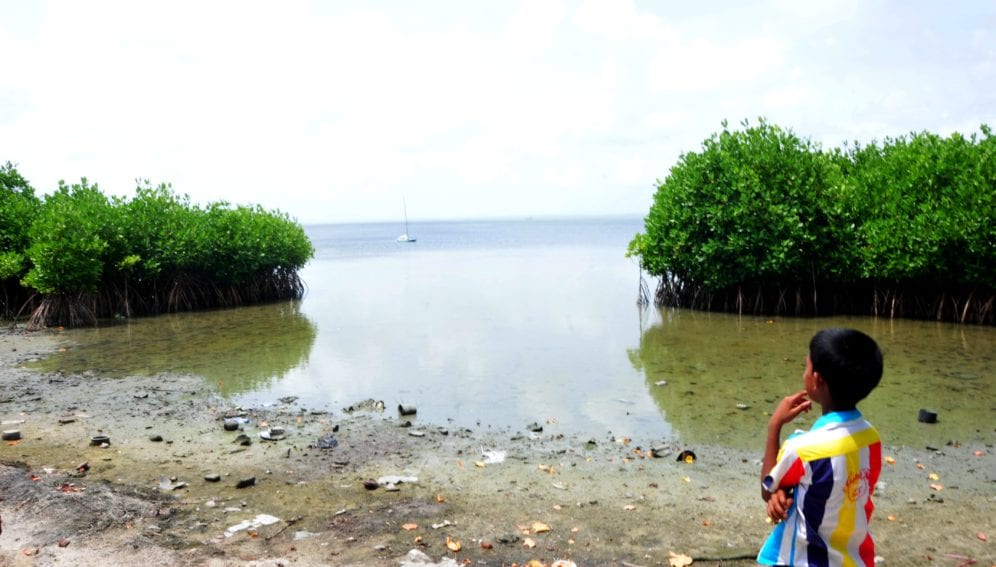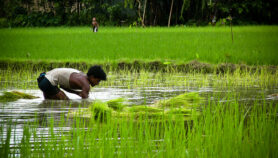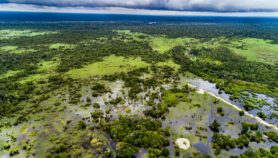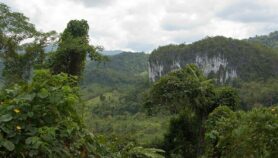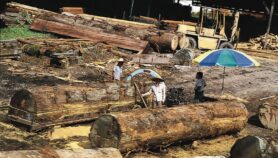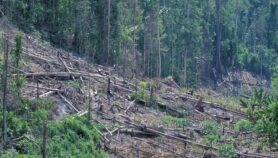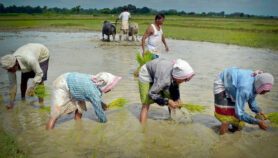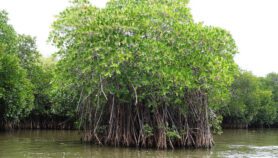By: Amantha Perera
Send to a friend
The details you provide on this page will not be used to send unsolicited email, and will not be sold to a 3rd party. See privacy policy.
[KALPITIYA] Residents of Sri Lanka’s north-western coast are convinced that well-tended mangroves can protect lives and property against the monsoon rains that lash the island from July to October.
The mangroves that Milan Gamage, a 35-year-old mother, planted behind her home on the edge of the Puttalam lagoon in 2008 are now mature enough to shield her modest residence from heavy rains, tides and high winds.
“The plants break the force of the waves, the rain and the wind, so we don’t get battered as we used to in the past,” Gamage says.
The mangroves were planted under a project initiated by the Small Fishers Foundation of Sri Lanka (Sudeesa), a national non-governmental organisation working with the small fisher community.
Over the last decade, Sudeesa has planted over 170,000 new mangrove plants in 860 hectares around the Puttalam Lagoon that is home to the largest extent of mangroves in Sri Lanka at 3,200 hectares.
“Mangroves are a vital part of the ecosystem as the large plants act as a buffer against high tide, large waves and monsoon waves crashing on to the shore,” says Douglas Thisera, a director at Sudeesa tells SciDev.Net.
According to Thisera mangroves have also been found to sequester carbon better than many other plant species.
Puttalam, an area highly vulnerable sea erosion, was degraded by the setting up of large prawn farms that were finally shut down due to the spread of disease. “The economic benefits from prawn farming were nowhere near the damage it caused to the environment,” Thisera says. In areas where mangroves were spared, the erosion rate was low.
In April, Sudeesa along with the US-based NGO Seacology launched a project to help conserve Sri Lanka’s 8,815 hectares of mangroves spread of over 40 lagoons.
The five year project costing US$3.5 million will provide 15,000 persons, half of them widows, financial assistance to set up cottage industries. In return the beneficiaries will look after assigned plots of mangroves.
Sudeesa chief, Anurudha Wickremasinghe, tells SciDev.Net that pilot projects in Puttalam, where grants worth over US$ 400,000 were disbursed over the last decade, have proved successful. “Now we are going island-wide with this project,” he said. Under the project some 3,385 hectares of mangrove forests are to be restored.
In support of the project, the Sri Lankan government has declared mangroves as protected areas to be patrolled by forest rangers.
This article has been produced by SciDev.Net's South Asia desk.


